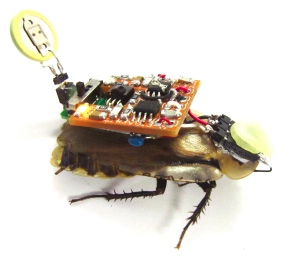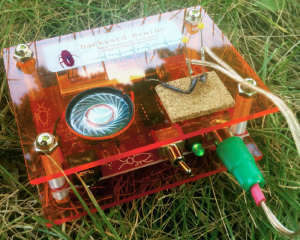 While there's technology that removes science students from their physical specimens, like the applications that offer alternatives to frog dissection, another company is using tech to connect them to dismembered bugs.
While there's technology that removes science students from their physical specimens, like the applications that offer alternatives to frog dissection, another company is using tech to connect them to dismembered bugs.
Far from the virtual world, It's all hands-on work with Backyard Brains. Insects lose their legs and their antenna. And for budding young researchers and scientists, the touch and feel is just part of the process.
Backyard Brains sells several affordable, entry-level brain recording kits that let students (of all ages) learn about and experiment with the nervous system. The SpikerBox ($99), for example, lets you connect neural probes to a cockroach's leg and send electrical impulses in order to record its neural activity. Another product just released this week, the RoboRoach ($99), lets you stimulate a cockroach's antenna nerves electronically, allowing the student to steer the insect left or right.
Okay, perhaps even without the advent of virtual app alternatives to experimentation, the idea of removing legs and antenna from insects and connecting neural stimulators to them gives you pause. But as co-founder Greg Gage stresses, "we don't kill insects." The company also says it prefers to "not be in the insect business." (It can point you to online cockroach suppliers. That's a whole other story.) What it does supply are the kits, the circuit boards, the electrodes and the curriculum.
 That curriculum is an interesting blend of both biology (the neuroscience) and engineering (the circuitry), which provides opportunities for "collaboration across the curriculum and across classes." Gage says that some of the schools that have used the kits, one class will assemble the circuit boards while another will conduct the research.
That curriculum is an interesting blend of both biology (the neuroscience) and engineering (the circuitry), which provides opportunities for "collaboration across the curriculum and across classes." Gage says that some of the schools that have used the kits, one class will assemble the circuit boards while another will conduct the research.

